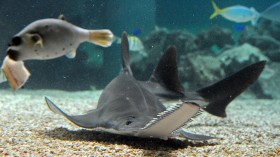Pieces of a long-lost world are lurking under the Indian Ocean island of Mauritius.
New evidence published in the journal Nature revealed that the ancient undiscovered continent is beneath the island, the remnants of the breakup of supercontinent Gondwana about 200 million years ago. According to a report from Phys Org, this chunk of crust, engulfed by young lava from volcanic eruptions, appears to be a piece of an old continent that separated from Madagascar when the other continents split up.
Researchers realized that the ancient continent may truly exist upon observing zircon in rocks ejected from the volcanoes. These three-billion-year-old crystals are far older than the rest of the rocks found in Mauritius.
"Earth is made up of two parts -- continents, which are old, and oceans, which are 'young'. On the continents you find rocks that are over four billion years old, but you find nothing like that in the oceans, as this is where new rocks are formed," lead author and Wits geologist Lewis Ashwal explained. "Mauritius is an island, and there is no rock older than 9 million years old on the island. However, by studying the rocks on the island, we have found zircons that are as old as 3 billion years."
Zircon survives geological processes very well, which means they are dated quite accurately.
Ashwal added, "The fact that we have found zircons of this age proves that there are much older crustal materials under Mauritius that could only have originated from a continent."
The team dubbed this lost continent Mauritia, suggesting that there are a lot of pieces are spread across the Indian Ocean.
Another significant clue to the existence of this lost continent was the discovery that certain areas of the Indian Ocean had stronger gravitational fields, likely indicative of thicker crusts, a report from New Scientist shared. There is a theory that pieces of land from the continent sunk and eventually attached itself to the ocean crust.
© 2024 NatureWorldNews.com All rights reserved. Do not reproduce without permission.
![Severe Thunderstorm Alert: Tornadoes, Damaging Winds and Hail Possible from Upper Ohio Valley to Northeast US [NWS]](https://1471793142.rsc.cdn77.org/data/thumbs/full/70161/280/157/50/40/severe-thunderstorm-alert-tornadoes-damaging-winds-and-hail-possible-from-upper-ohio-valley-to-northeast-us-nws.jpg)




